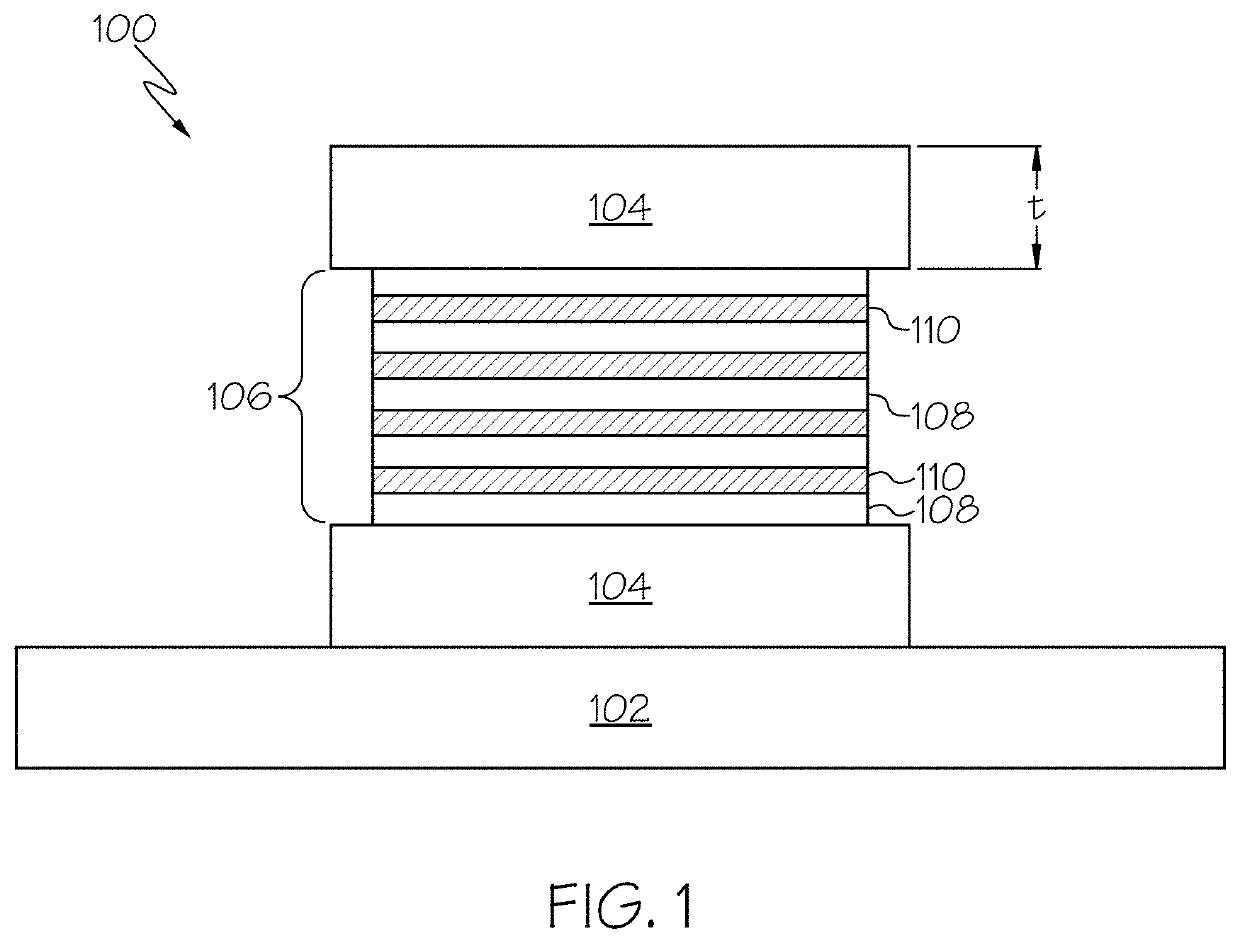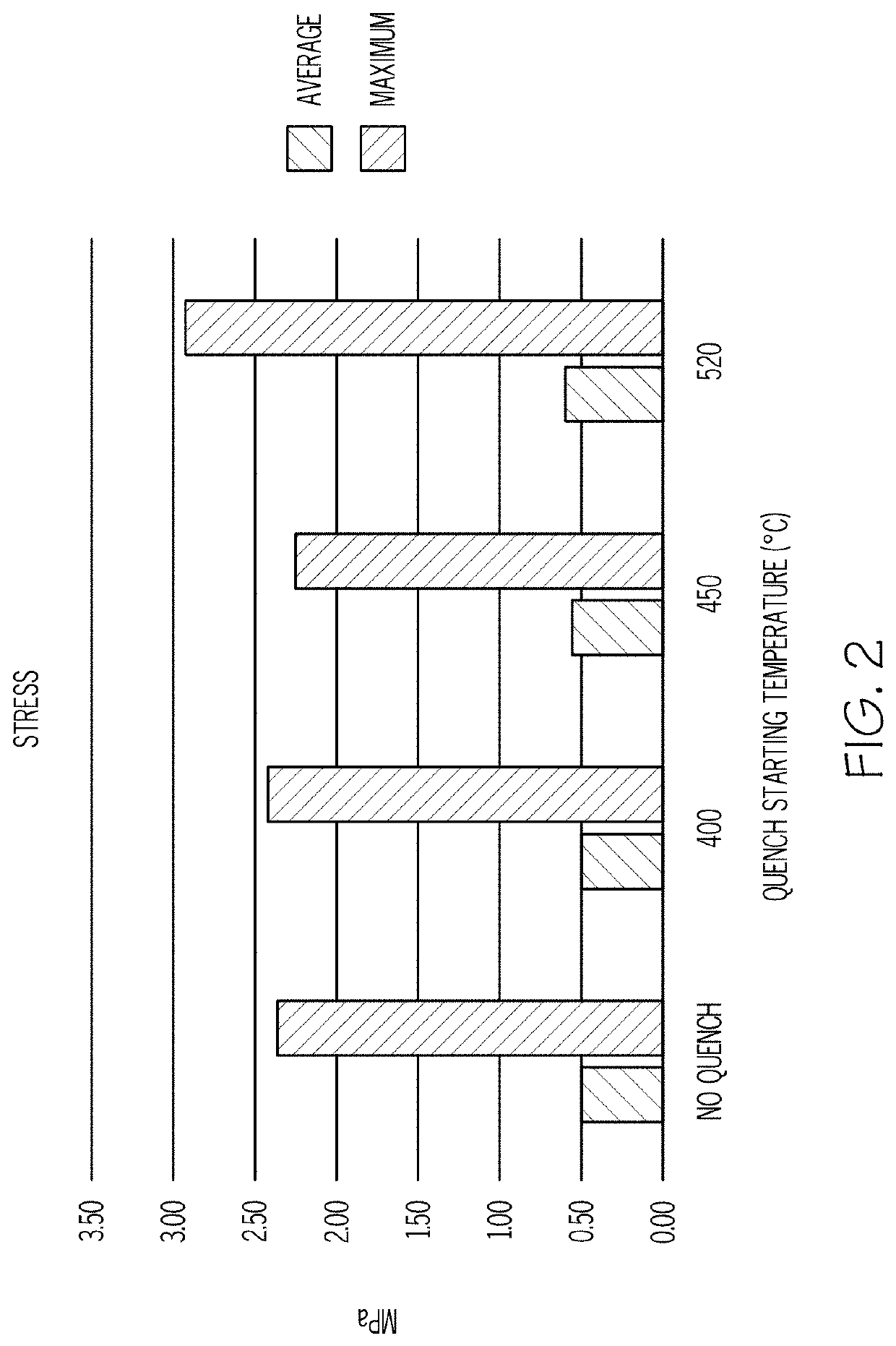Methods of ceramming glass articles having improved warp
- Summary
- Abstract
- Description
- Claims
- Application Information
AI Technical Summary
Benefits of technology
Problems solved by technology
Method used
Image
Examples
embodiment 1
[0111]A method of ceramming a plurality of glass sheets comprising:
[0112]positioning a first portion of the plurality of glass sheets in a first stack between a first setter plate and a second setter plate and a second portion of the plurality of glass sheets in a second stack between the second setter plate and a third setter plate on top of the first stack in a glass stack configuration; and
[0113]exposing the glass stack configuration to a ceramming cycle to ceram the plurality of glass sheets,
[0114]wherein a ΔT of the first stack or the second stack is less than 10° C. when the glass sheets are heated to a nucleation temperature for a predetermined period of time during the ceramming cycle; or
[0115]wherein a ΔT of the first stack or the second stack is less than 10° C. when the glass sheets are heated to a crystallization temperature for a predetermined period of time during the ceramming cycle.
embodiment 2
[0116]The method of claim 1, wherein the plurality of glass sheets have a maximum thickness variation of 21 μm or less.
embodiment 3
[0117]The method of claim 1 or claim 2, further comprising removing the edge beads on each of the plurality of glass sheets.
PUM
| Property | Measurement | Unit |
|---|---|---|
| Temperature | aaaaa | aaaaa |
| Temperature | aaaaa | aaaaa |
| Temperature | aaaaa | aaaaa |
Abstract
Description
Claims
Application Information
 Login to view more
Login to view more - R&D Engineer
- R&D Manager
- IP Professional
- Industry Leading Data Capabilities
- Powerful AI technology
- Patent DNA Extraction
Browse by: Latest US Patents, China's latest patents, Technical Efficacy Thesaurus, Application Domain, Technology Topic.
© 2024 PatSnap. All rights reserved.Legal|Privacy policy|Modern Slavery Act Transparency Statement|Sitemap



